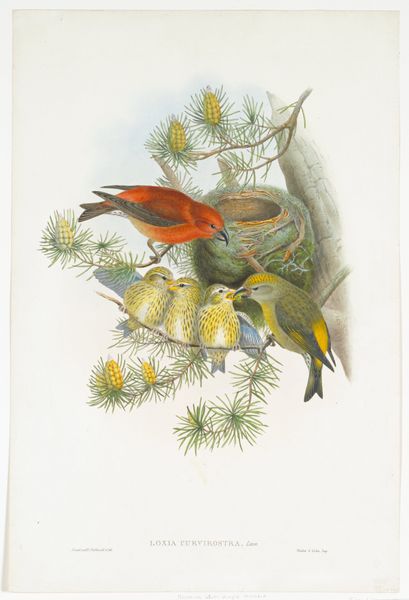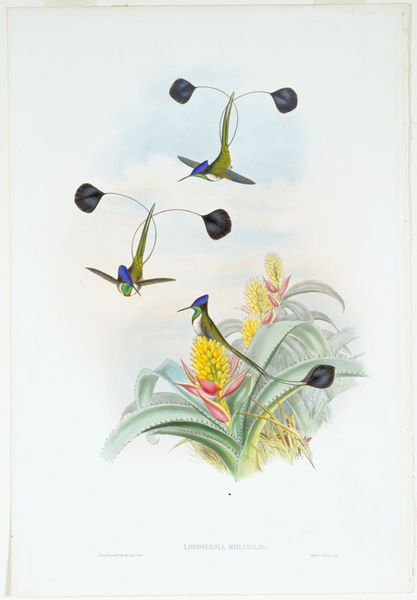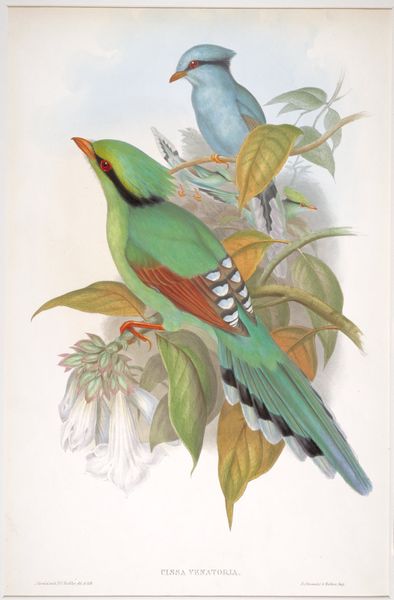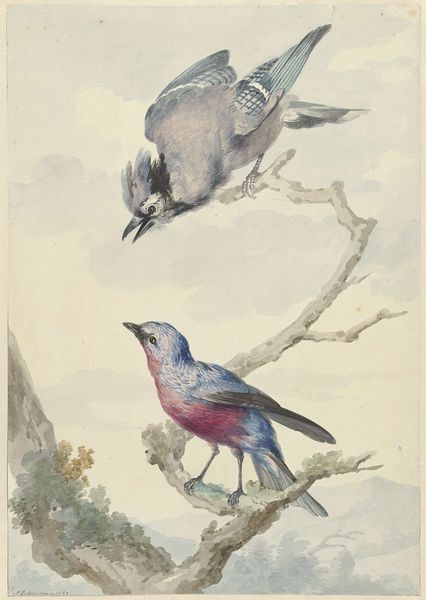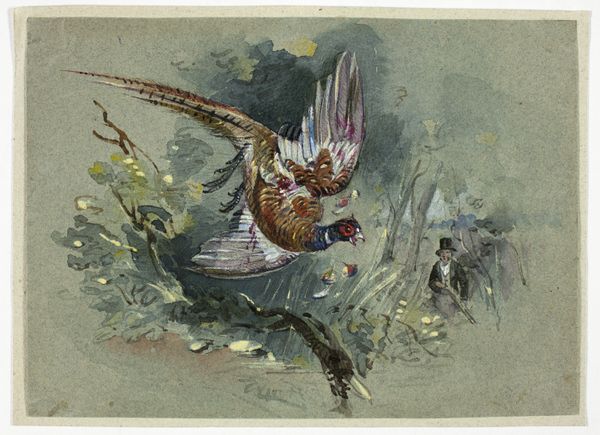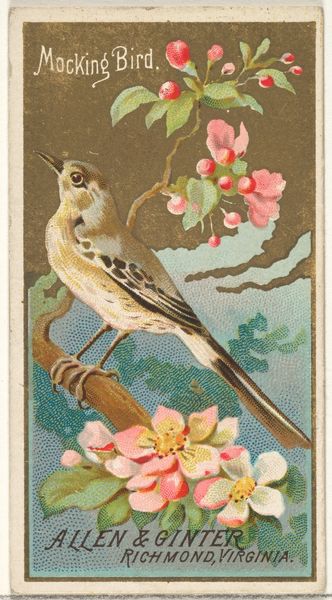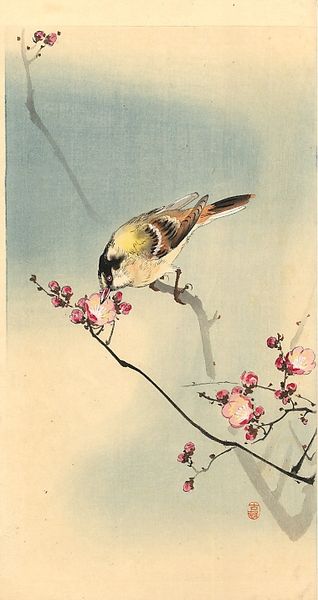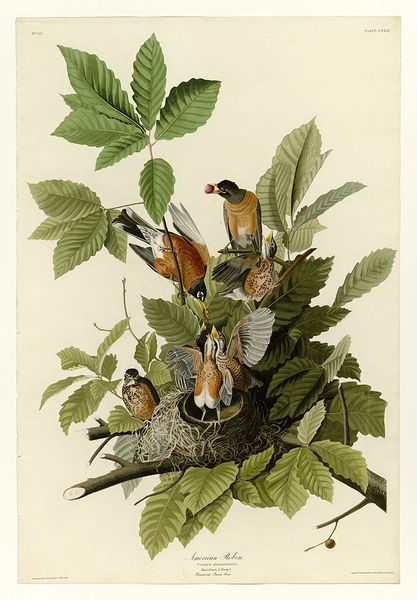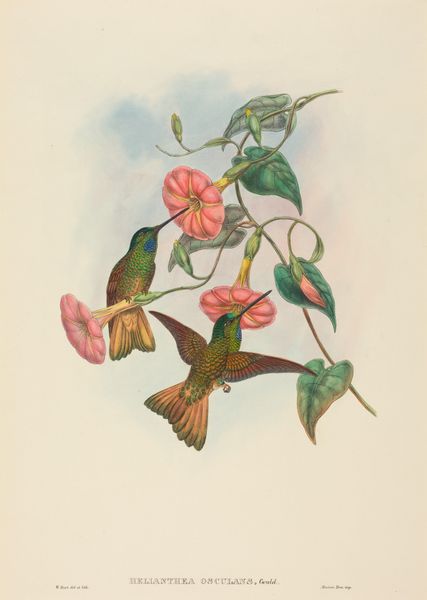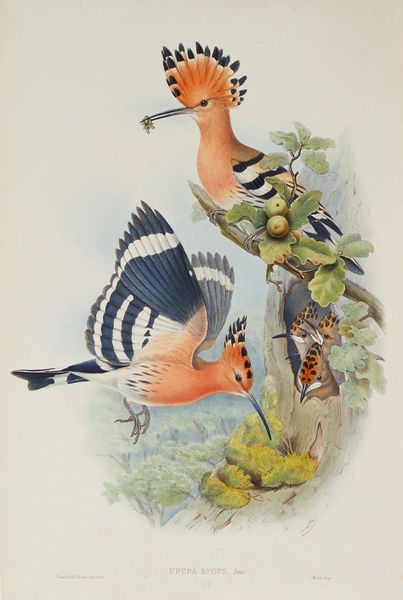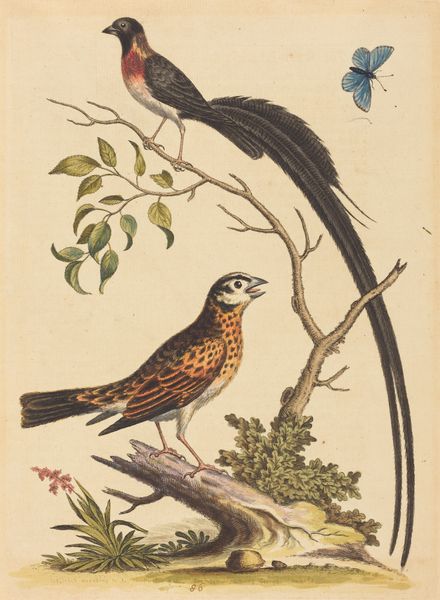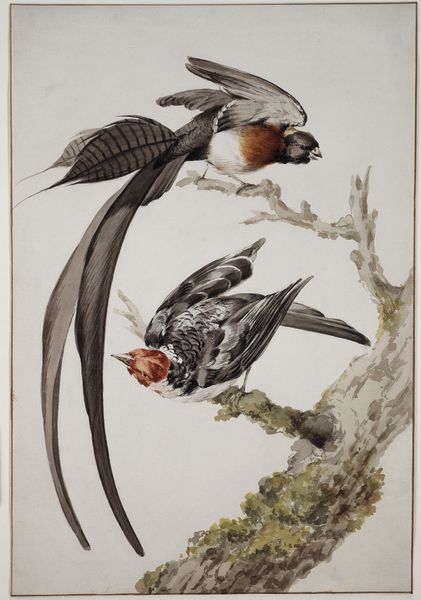
Dimensions: overall: 37.3 x 30.3 cm (14 11/16 x 11 15/16 in.)
Copyright: National Gallery of Art: CC0 1.0
Editor: Here we have Harry Bright’s “Gold Finches and Their Nest in an Apple Tree” from 1878, done with watercolor and drawing. It feels delicate, and almost scientific in its detail. What do you see when you look at it? Curator: Well, I am drawn to the meticulous rendering of the nest itself. Consider the labor involved in both the finches' construction of the actual nest, a crucial aspect of their biological reproduction, and Bright’s detailed recreation through his artistic process. Notice the varying textures – the moss, the twigs. Editor: Yes, the contrast between the rough nest and the soft blossoms is really striking! Curator: Precisely! And those blossoms are vital too. Think about the apple tree, the source of both food and the material foundation for the nest through shed twigs and blossoms. Then Bright translates those resources into artistic labor via drawing and watercolor. What does that process reveal to you about our understanding of art and nature? Editor: I hadn't considered the apple tree itself as a key actor, contributing its resources. The way Bright shows both the bird's work and the blossoms together almost implies his work has some of the same natural origins. Curator: Absolutely! It highlights how artistic creation is, in its own way, a kind of crafting or construction, rooted in readily-available, organic materials just as the nest-building itself is. Is the labor involved so different after all? What does it mean to elevate botanical illustration or even animal portraits to high art, and what societal forces determine that elevation? Editor: This really has changed my perspective on the piece. I initially saw a simple nature scene but now I am thinking about the intersection of labor, nature, and artistic processes that influence value and reception. Curator: Precisely. By examining the work in terms of material production, labor, and how these components interact within their environment, our understanding of this seemingly straightforward illustration is substantially enriched.
Comments
No comments
Be the first to comment and join the conversation on the ultimate creative platform.
